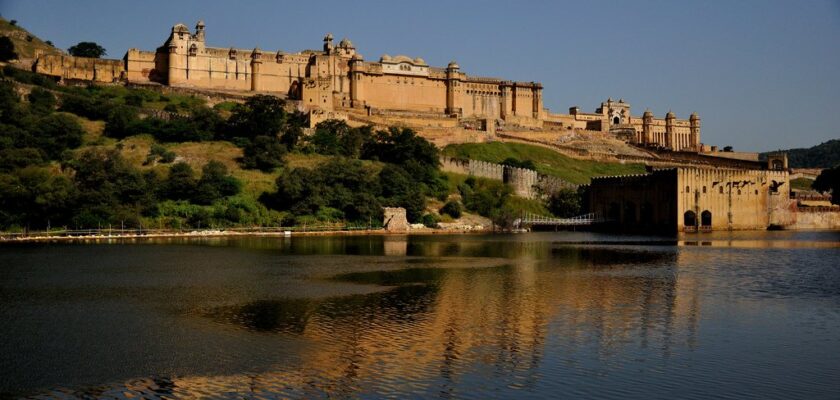Amber Fort
Amber Fort is a huge, magnificent honey-colored fortress palace, a prime example of Rajput architecture, which towers above the rocky mountains about 11 km northwest of Jaipur. Fort Amber was once the capital of the state of Jaipur.
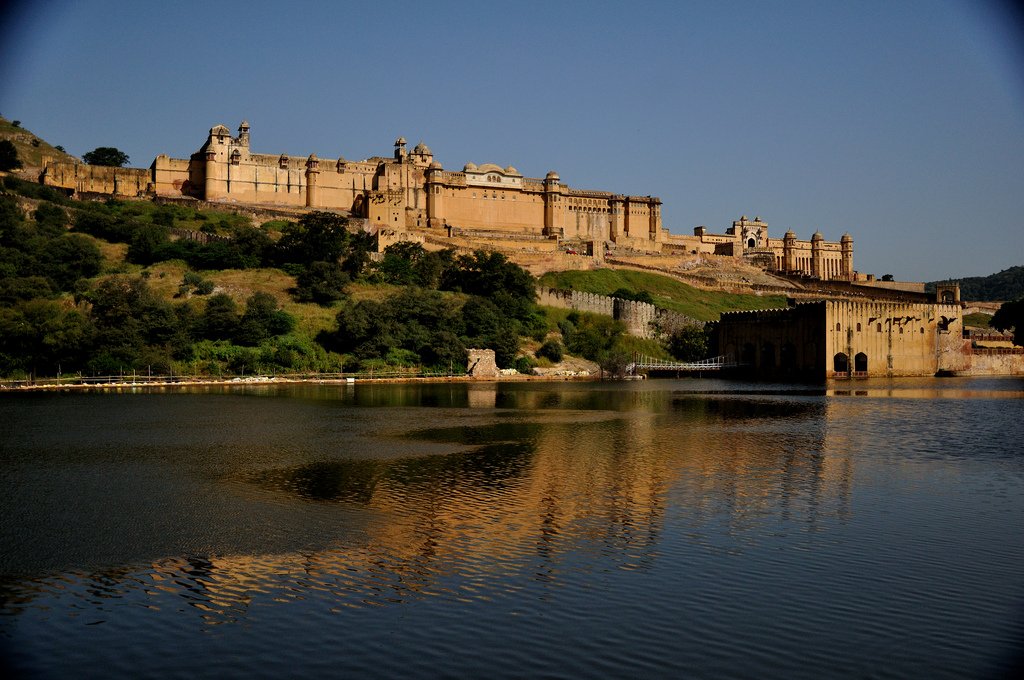
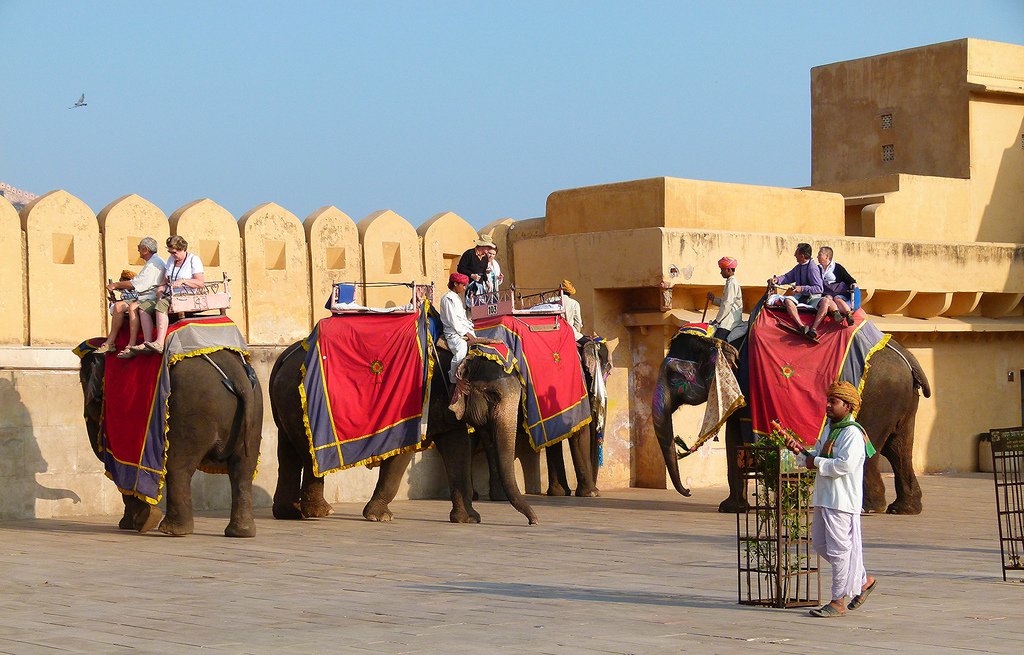
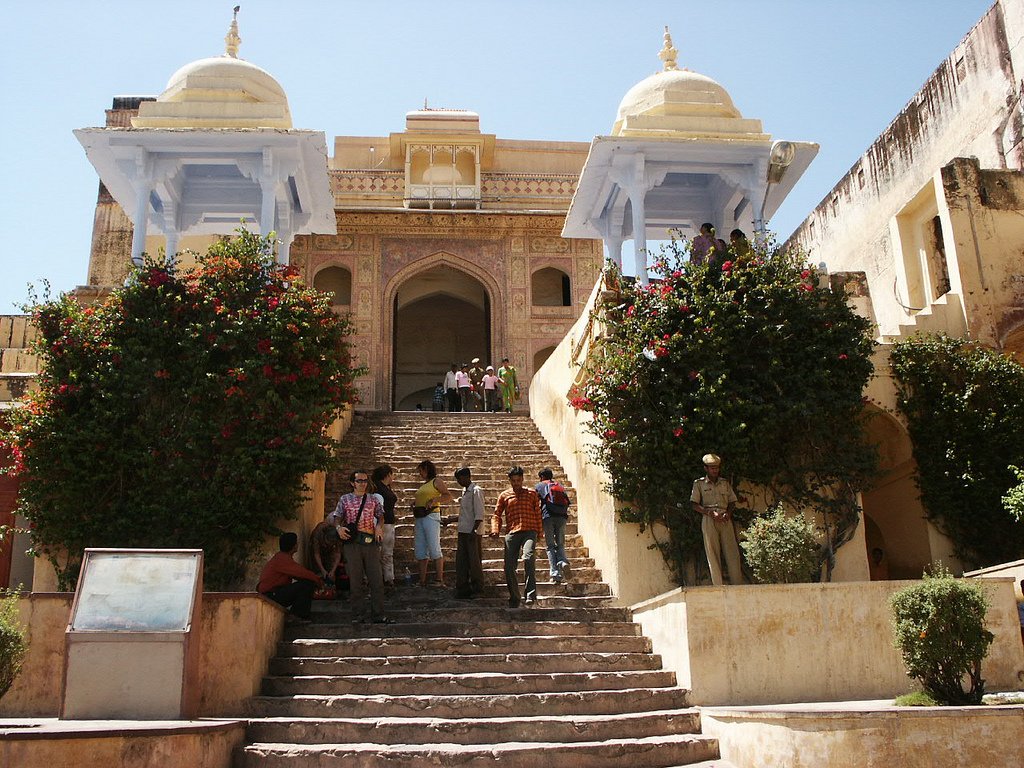
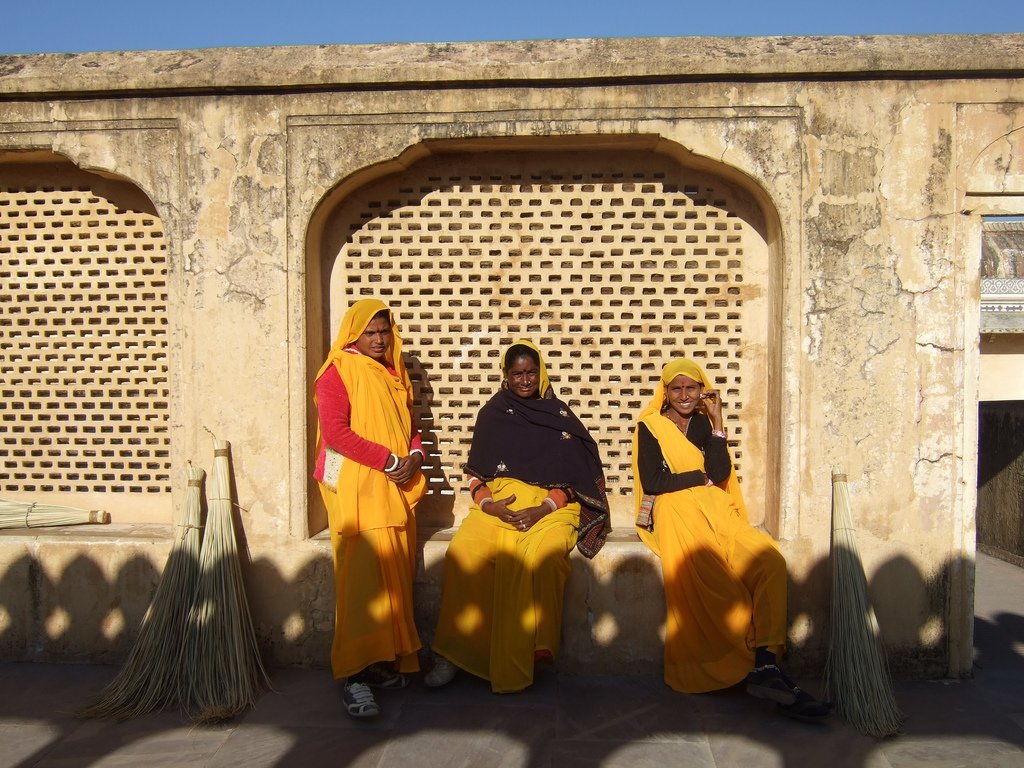
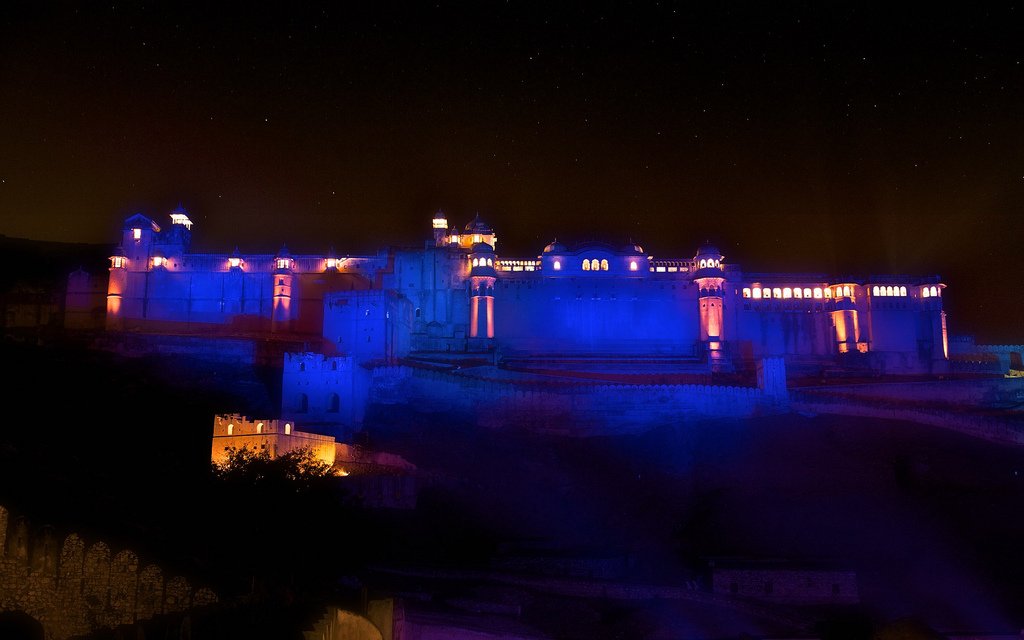
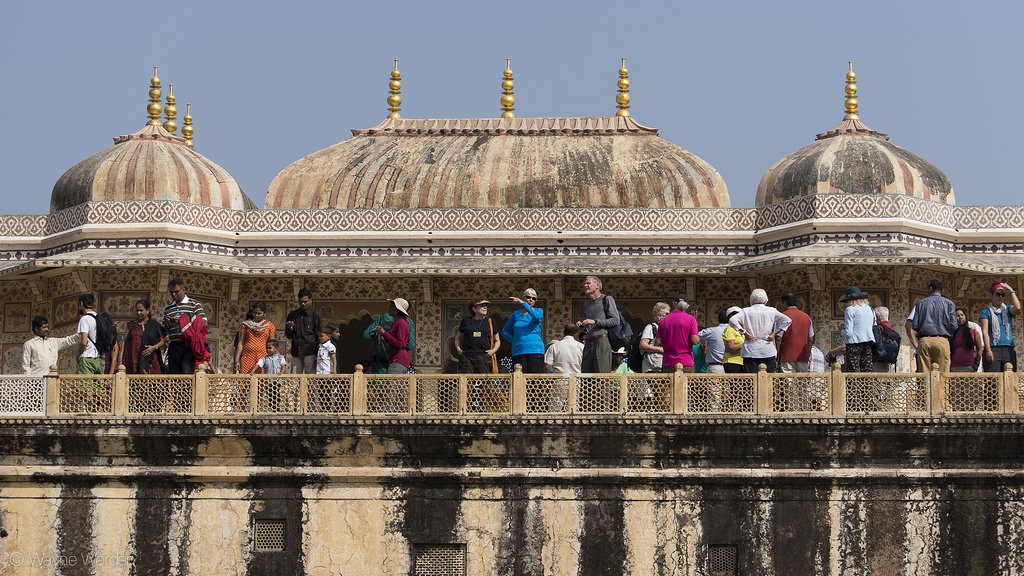
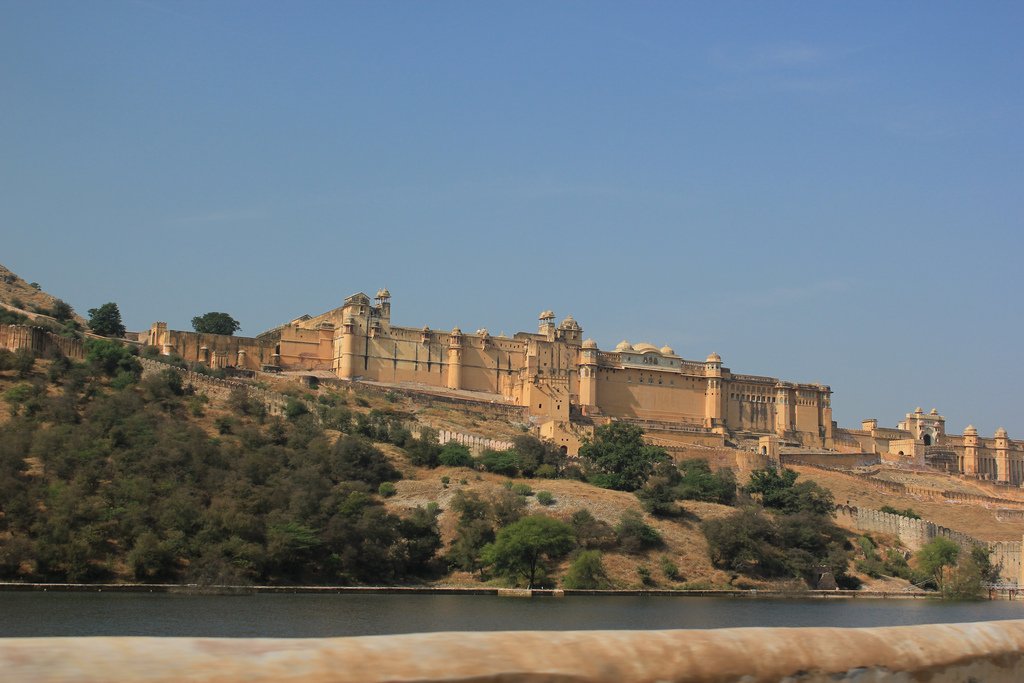
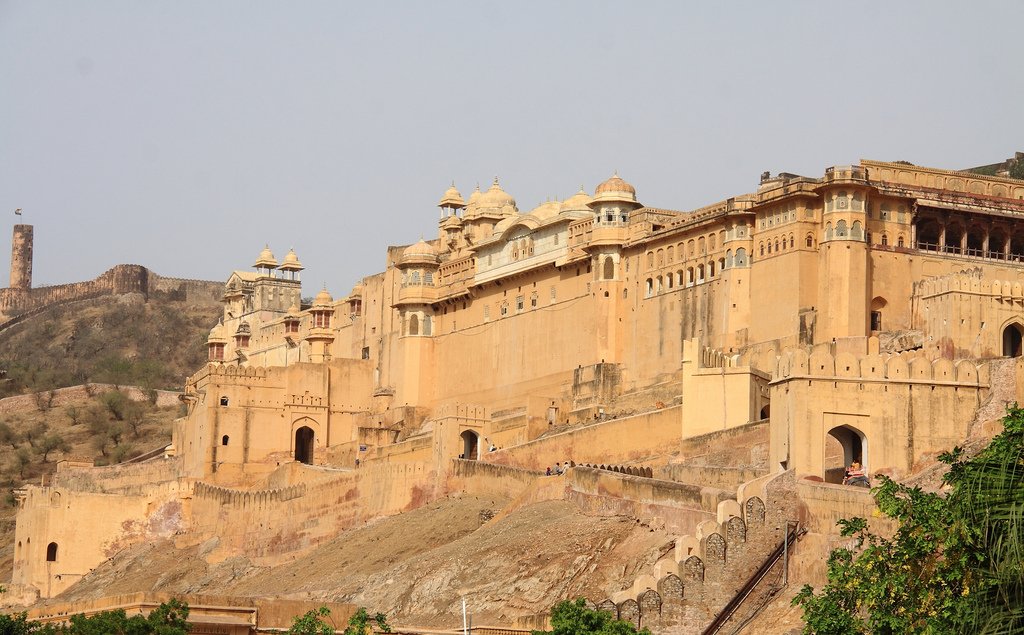
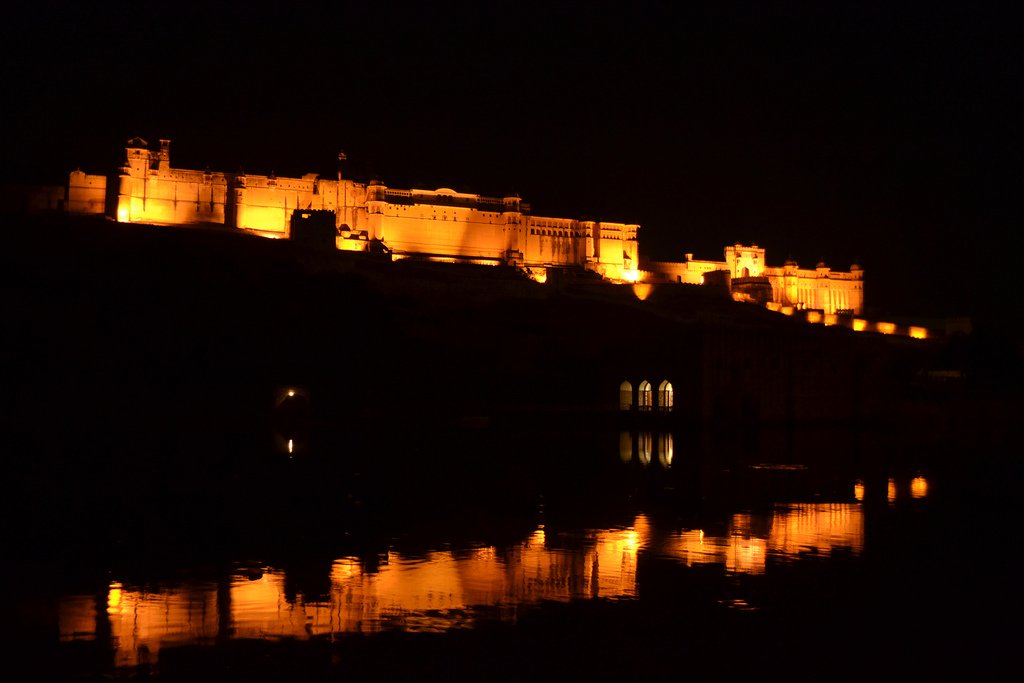
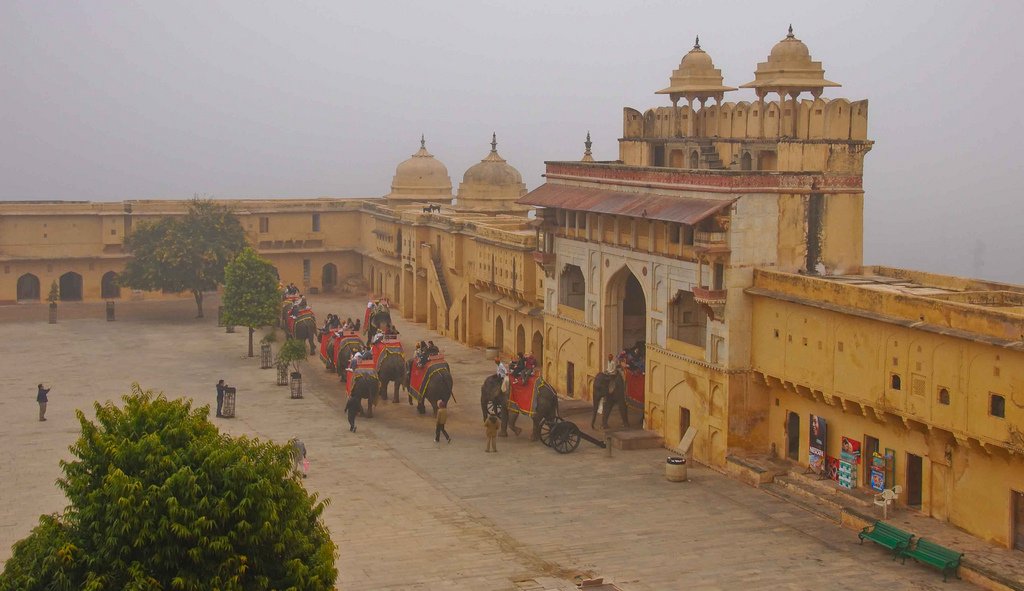
General information
Indians/foreigners Rs. 25/200,tour guide Rs. 200,audio guide Hindi/English/other European languages/Asian languages Rs. 100/150/200/250;8 a.m.-6 p.m., last group at 5:30 p.m.
Amber was built by the Kachhwah Rajputs, who were originally from Gwalior, now Madhya Pradesh, and ruled there for over 800 years. They financed the construction of the castle-fortress Amber with loot from wars, which was started in 1592 by Maharaja Man Singh, a Rajput and commander-in-chief of Akbar’s army. Amber was later enlarged and completed by the Jai Singhs before they moved to Jaipur, on the plain below. Dominating the gorge, the fort gave a military advantage but was unsuitable for the direction of capital development envisioned by Jai Singh.
.
The road to Amber passes through typical Rajasthan scenery, with sun-scorched hills around Maota Lake, where buffaloes lie lazily lying on the shore near the water. You might catch sight of a camel pulling a loaded cart.
This magnificent fortress is more like a city: built of pale yellow and pink sandstone and white marble, it is divided into four main sections, and each has its own courtyard. Fort Amber is also an exquisite example of the wealth of the Maharajas: artists sent by Emperor Aurangzeb worked on the columns and arches, and decorated the gallery around the Public Audience Hall building.
You can weave your way to the fort from the road for about 10 minutes (refreshments will only be available at the top). It costs 200 rupees to reach the fort by jeep. Riding on the back of an elephant is very popular (900 rupees for two passengers; 8.00-11.00 and 15.30-17.30).
.On foot or by elephant, you enter the fort through Suraj Pol (Sun Gate), which leads to the Jaleb Chowk (main courtyard), where an army returning from a campaign would display its booty to the public – women could watch through the curtained windows of the palace. The ticket office is across the courtyard from the Sun Gate. If you come by car, you will get inside through Chand Pol (Moon Gate) on the opposite side from Jaleb Chowk. It is highly recommended to hire a guide or take an audio guide as there are few explanations and many hidden passages.
.From Jaleb Chowk there is a massive staircase up to the main palace of Amber Fort, but first turn right up the steps that lead to the small Ciladevi Temple (Ciladevi Temple; no photography allowed; 6.00-12.00 and 16.00-20.00). This temple is dedicated to the goddess Sila, the incarnation of the bloodthirsty goddess Kali. On the silver doors of the temple, she is depicted riding various animals. Her statue was brought here from Bengal, where the Kali cult is particularly popular. Every day from the 16th century until 1980 (when the government banned the practice), a goat was sacrificed here.
.
If you return to the main staircase, you reach the second courtyard and the Diwan-i-Am (Public Audience Hall) with a double row of columns, each crowned by an elephant, and lattice galleries on top of them.
.The third courtyard of Amber Fort houses the Maharadoka’s apartments – the entrance is through Ganesh Pol (Ganesh Pol), decorated with mosaics and sculptures. The Jai Mandir (Hall of Victories) is famous for its Indian paneling and ceiling of many mirrors. Carved marble panels throughout the hall, depicting marvelous delicate patterns of insects and floral motifs.
.Opposite the Jai Mandir is the Sukh Niwas (Hall of Pleasure) with ivory inlaid sandalwood doors and a canal that once carried water inside. Jai Mandir offers a wonderful view of the bastion and the picturesque Maota Lake.
.Zenana (women’s quarters) surrounds the fourth courtyard of Amber. The rooms were designed so that the maharajah could visit the rooms of one of his wives and concubines and the others would not know about it; the chambers of each are not connected to each other, but open onto a common corridor.
Anokhi Manuscript Museum
Anokhi Haveli, Kheri Gate;children/adults Rs. 15/30,photo/video Rs. 50/150;10.30-16.30 Tues-Sat, 11.00-16.30 Sun,closed from May 1 to July 15
.This interesting museum, which has handmade woodblock prints of fabrics on display, is located just outside Amber Fort, in the town of Amber.
.Road to and from Fort Amber
There are frequent (crowded) buses to Amber from Jaipur, near Hawa Mahal (Hawa Mahal; Rs. 10, 25 minutes). Autorickshaws or cabs cost from Rs 150/550 for the return trip. Fort Amber is included in RTDC’s city tours.
.